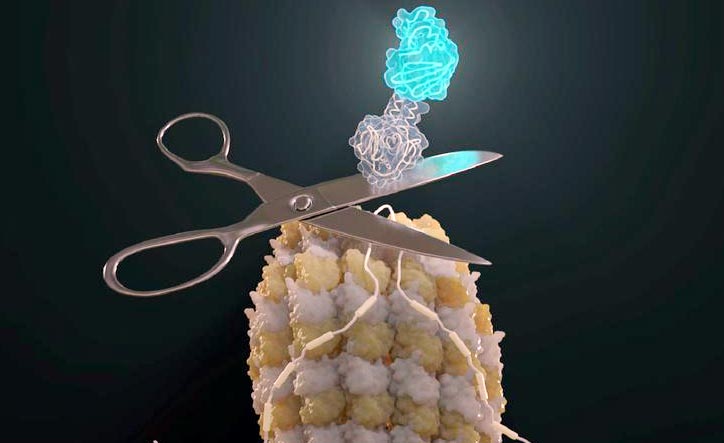Proteins are the key players in our cellular processes. Their generation follows principles called transcription and translation. First, DNA copies its genetic information to messenger RNA (mRNA), which then determines the sequence in a chain of amino acids, which finally fold into a protein.
The reality, however, is more complex: More than 90 per cent of our genes do not result in only one mRNA and then one protein, but a process called alternative splicing produces several mRNA variants, only some of which are then translated into a specific protein isoform in a specific cell at a given time. Conventional techniques to detect alternative splicing are mostly single time-point measurements that are work-intense and cannot reliably monitor over time which protein isoforms are actually translated in the cell.
Researchers at Helmholtz Zentrum München and the Technical University of Munich (TUM) thus developed a new bioengineered reporter system called EXSISERS. The idea behind it is to generate a signal such as light as soon as a specific protein isoform is being translated.
“This is possible via designer reporter proteins that can cut themselves out of the nascent amino acid chain- they are self-excising,” says Dong-Jiunn Jeffery Truong. “In analogy to the famous cut and restore rope trick in magic performances, the excision of the reporter leaves no scar in the natural protein isoforms.”
The researchers have already applied this method to human cells in culture. One of their aims was to analyze the expression of isoforms of a protein called Tau, which is associated with neurodegenerative diseases such as Parkinson’s. This makes Tau isoforms a potential target for future molecular therapies.
“Bioengineering inspired by natural biomolecular processes will make it possible to observe many other fundamental cellular processes non-invasively,” says Gil Gregor Westmeyer. “The more cellular parameters we can monitor, the better we can develop targeted molecular interventions for future cellular therapies, for example, to treat neurodegenerative diseases.”
Westmeyer and his team are already collaborating with several academic laboratories that use the new reporter system to obtain a more comprehensive understanding of isoform expression in cells and its implication in diseases.
###
About the people
Gil Gregor Westmeyer is Director of the Institute for Synthetic Biomedicine at Helmholtz Zentrum München and Professor of Neurobiological Engineering at TUM. Dong-Jiunn Jeffery Truong is a group leader at the Institute for Synthetic Biomedicine at Helmholtz Zentrum München and first author of this study.
Original publication
Truong et al., 2021: Non-invasive and high-throughput interrogation of exon-specific isoform expression. Nature Cell Biology, DOI: 10.1038/s41556-021-00678-x
Helmholtz Zentrum München
Helmholtz Zentrum München is a research center with the mission to discover personalized medical solutions for the prevention and therapy of environmentally-induced diseases and promote a healthier society in a rapidly changing world. It investigates important common diseases which develop from the interaction of lifestyle, environmental factors and personal genetic background, focusing particularly on diabetes mellitus, allergies and chronic lung diseases. Helmholtz Zentrum München is headquartered in Neuherberg in the north of Munich and has about 2,500 staff members. It is a member of the Helmholtz Association, the largest scientific organization in Germany with more than 40,000 employees at 18 research centers.







